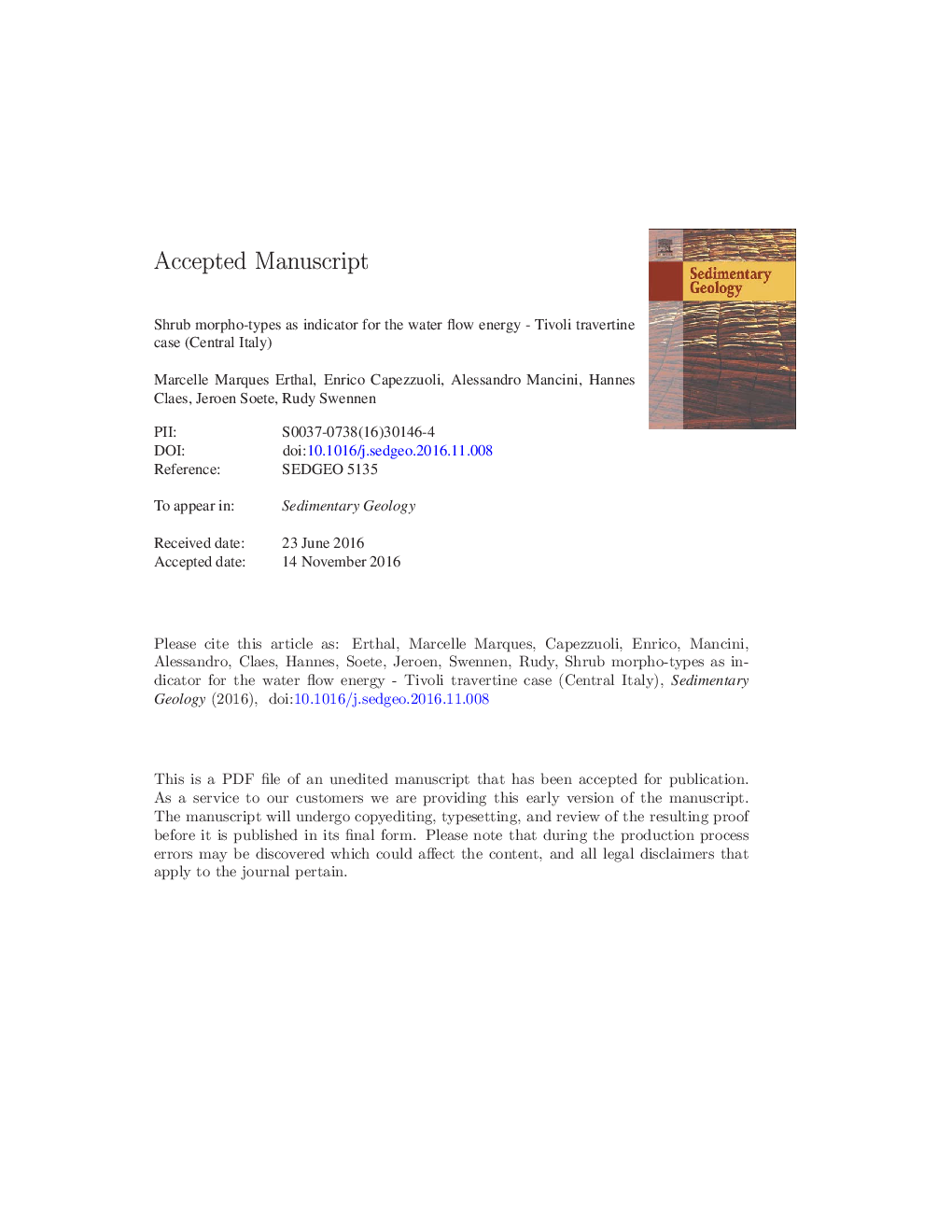| Article ID | Journal | Published Year | Pages | File Type |
|---|---|---|---|---|
| 5781329 | Sedimentary Geology | 2017 | 82 Pages |
Abstract
Shrub morphologies likely reflect specific (micro-) environments that are controlled by water flow rates, evaporation and microbial activity. The latter processes influenced shrub fabric and morphology. Under high flow conditions, CO2 degassing is the main process leading to carbonate precipitation. Consequently, denser and tightly packed morphologies will precipitate, composing mainly the crust lithotype. In this scenario microbes are less dominant. Dendriform shrubs, with narrow, wide and fili morphologies are interpreted to occur in moderate to low energy water flows. Narrow dendriform shrubs reflect faster flowing conditions, with decreasing impact of flow on the morphological aspects from wide dendriform shrubs to fili dendriform shrubs. Slow to very slow flowing waters are more characteristic for the arborescent, arbustiform and pustular shrubs that possibly are highly influenced by evaporation. A decrease of water flow likely allows higher microbial activity, and consequently, shrub morphologies become more fragile and enriched in peloidal micritic aggregate fabrics.
Related Topics
Physical Sciences and Engineering
Earth and Planetary Sciences
Earth-Surface Processes
Authors
Marcelle Marques Erthal, Enrico Capezzuoli, Alessandro Mancini, Hannes Claes, Jeroen Soete, Rudy Swennen,
